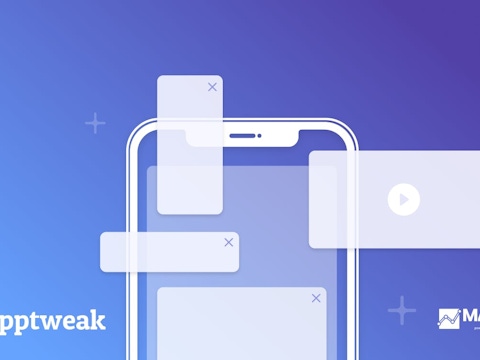
In-App Advertising: Fine Balance Between Art and Science
Every business today has an app – well, almost. And every business wants to go all out when acquiring users and increasing revenue streams. However, an in-app advertising strategy is much more than just creating an ad and hoping for it to work!
Any marketing campaign is anchored in 4Ms:
- Market: The intended target audience or customer segment you are speaking to
- Message: Recommendations or ads you want to show to your target audience, including creatives and personalization which offer scale to that segment
- Media: Channels to reach that audience
- Measurement: How to measure ad effectiveness and in-app campaigns optimization
This is a guest blog written by MAAS.
Plenty of factors affect the performance of your ad campaign: How you build, manage, and optimize in-app campaigns can affect the outcome of your campaign. For advertisers – particularly those who are starting small or working on an inorganic growth plan for the first time – this can feel overwhelming.
AppTweak has partnered with Affle’s MAAS, a unified audience platform experienced in running successful campaigns. MAAS provides users with key insights into why in-app campaigns matter and how they can affect campaign performance. Read on to learn best practices to achieve effectiveness for campaigns anchored in the 4Ms.
1. Market: Know your audience
Understanding your audience is a must for a good campaign. In a traditional business world, one would look at the market and target audience using parameters like age, gender, or geolocation, and then create customer segments. However, with the explosion of the app economy, one should look at a variety of parameters such as app usage, engagement, retention rates, and transaction history to create valuable customer segments.
For instance, a fashion app could use Artificial Intelligence/Machine Learning-based data insights to find user segments. A good user segment would be individuals who have looked at a piece of apparel multiple times in the last couple of days or have added items to their wishlist. Having the right ad partner at the “build” stage of a campaign ensures that you have the right targeting techniques. A good segment should deliver a high response and engagement rate.
Once you know your audience, the next step in your in-app campaign process is to understand the right key performance indicators (KPIs) for this market. An advertiser can look at multiple metrics to achieve campaign goals – it’s important to define campaign goals like increased awareness, installs, or promotions. Based on the same principles, marketers can then track multiple metrics like downloads/installs, impressions, etc. Your app growth can also benefit from flexible pricing models that your ad partner offers based on your KPIs. These can be the cost per install (CPI), cost per action (CPA), cost per click (CPC), and so forth. Know your goal and accordingly choose the key performance indicator which will fulfill your targets.
Understand the most significant KPIs and metrics to track to measure your ASO performance
2. Message: Combine creatives with data
To compete with the most successful brands, it is important to have the right creative mix. The next step can be to test the performance of your app creatives, helping you to better understand the audience. Following these steps can help increase users’ engagement with the in-app campaigns and ultimately improve conversion goals.
How to make meaningful AB Test interpretations
Including calls-to-action and promotional offers leads to a higher engagement rate. Personalized recommendations as part of your campaign strategy help you answer questions around campaign optimization and find the best-performing strategy. To prevent the risk of creative fatigue, keep updating your creatives and run A/B tests with your ad partner to find out which creatives work best for you. A data-driven approach to creative optimization can help you save time and money, as well as give you better returns on your campaign.
3. Medium: Orchestrate channels for a lasting message
Marketers today have the option of different channels for their mobile marketing: Some prefer social media while others prefer influencer marketing or programmatic marketing. Often, marketers work on a single channel and work in-house, but they don’t get the desired results despite investing in huge budgets. Your ad partner can help to find the right channel for activation. By diversifying your channels, you can leverage the maximum capabilities of each channel at the right time. Detailed in-app campaign reports from your ad partner can help you figure out what works for you and find the right balance. Whether you are a growing app or one that has already reached scale, you need to identify early trends and spot correlations to make the right optimization decisions. Failure to do so can result in campaigns sinking money and not delivering the desired results.
For advertisers, working with different channels and partners can be overwhelming; this is where a unified approach to campaign tracking can help. A unified dashboard to manage campaigns can take away the puzzle of how and when to move to different growth channels. For example, when an app needs to increase installs, the platform could provide them with high-quality users at scale through directly integrated publishers and demand-side platforms (DSPs). The platform could also help to ensure that certain key performance indicators are reached and campaigns are nurtured and that channels such as original equipment manufacturer (OEM) recommendations and native app stores are targeted for specific audiences.
4. Measure: Anything that can’t be measured can’t be improved
It can be tempting to jump on the bandwagon and launch campaigns similar to competing brands. However, what works for competitors may not work for you. Not all advertisers track the right metrics or have the same campaign goals. Marketers also can fall into the trap of overcomplicating campaigns with too many creatives and losing sight of the primary focus. It is highly recommended to keep your campaign goals simple to focus on the main key performance indicators and deprioritize irrelevant ones. This will give a campaign manager a clear picture of potential users and what the campaign can deliver. Benchmarking clicks and impressions, alongside other KPIs, can help measure user behavior and better optimize the user acquisition (UA) strategy. If the goal of the campaign is to increase traffic, it is recommended that in-app campaign managers create a blacklist and whitelist to focus on sources that work and invest budgets accordingly. One can also use custom cohorts to optimize campaign performance based on pre-defined KPIs, as well as make intelligent decisions by identifying those events which will most likely lead to conversions.
Keyword Performance Report: Monitor All Your Ranked Keywords
It is also important to factor in the time needed to optimize. Consider giving the bid strategy of a new campaign at least 15 days to run before the algorithms can start evaluating the performance. Allowing this time to pass gives the strategy time to adapt, and will also account for any conversion delays.
Final word
Campaign management is a delicate balance between art and science. Building a campaign right is just the start of user acquisition success. What separates a successful mobile marketing campaign from an unsuccessful one is how well it is managed and tracked for optimization. Campaign optimization helps advertisers get an early view into what works and what doesn’t so they can quickly make decisions about diverting resources, budgets, creatives, or channels.
Data is gold, but what you do with that data is even more important. Having the right in-app campaigns strategy and tools in place is just the first step. It is also crucial to follow campaign reports. Using the experience of ad partners to optimize campaigns, advertisers can see real shifts in campaign performance and get on track for successful user acquisition.
With real-time reporting and actionable insights on managed or self-serve platforms, a slice-and-dice approach to in-app campaigns can help advertisers drill down their insights to the level of year, months, and days. Tools such as mInsight, for instance, can also give you the right level of insights to help A/B test your results, see how ads are placed, and gain a competitive edge over the market by analyzing trends from your competition and thus improving your revenue streams.
Learn how AppTweak can help you reach your app marketing goals.



 Musique Battut
Musique Battut
 Sukanya Sur
Sukanya Sur
 Simon Thillay
Simon Thillay


 Marine Nozerand
Marine Nozerand